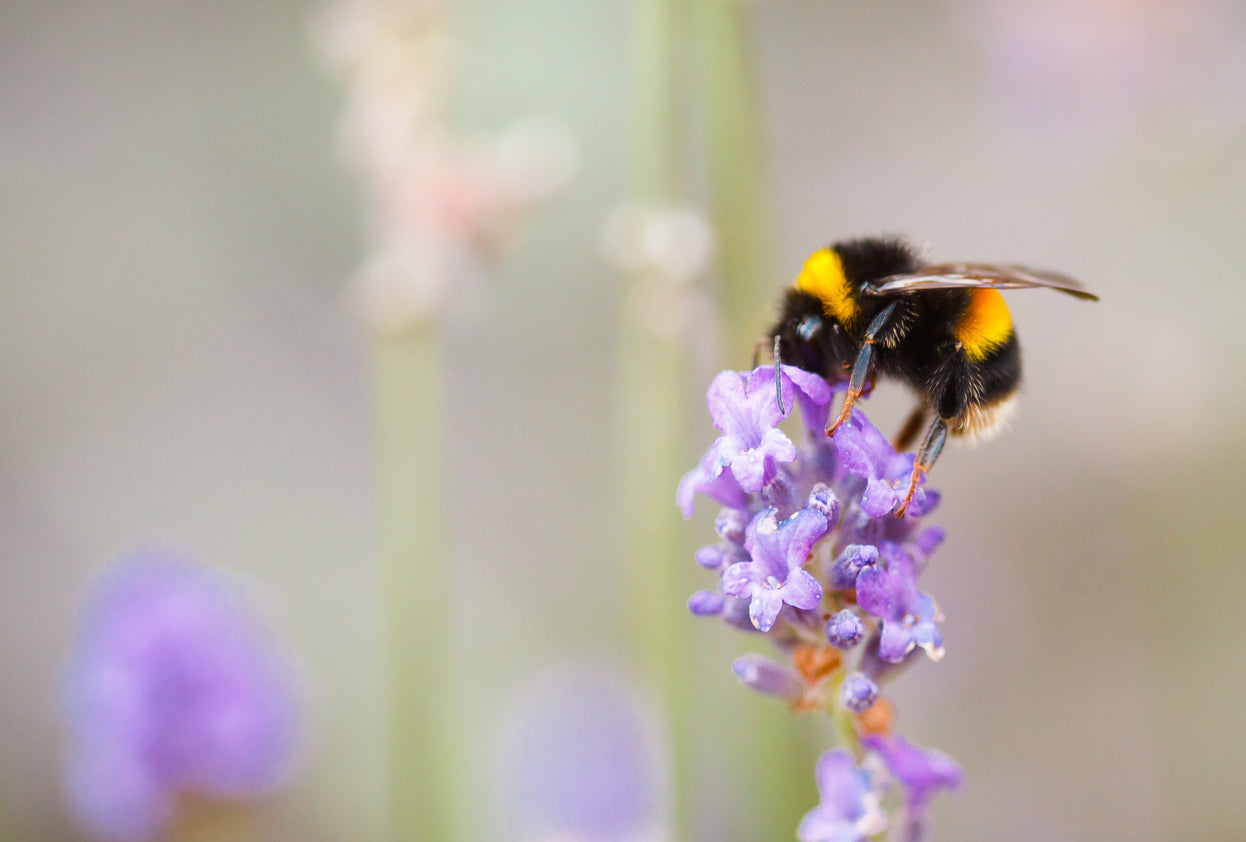
UK BEE SPECIES
If you have only a cursory knowledge of bees, this quick rundown of the species which can be found in Britain will give you a better appreciation of the key role they play in the natural order.
Before we dive in, it is worth mentioning that scientists have identified over 260 different species of bee which make a home here, so we will not be covering all of them! It is also important to dispel the myth that all bees live in hives; in fact the opposite is true, with most living solitary lives, apart from the occasions on which they meet up to reproduce.
With all that in mind, here are a few of the major British bee species that you will be likely to spot during the warmer months of the year.
1. Bumble Bee
The bumble bee is not a distinct species in its own right, but in fact, consists of 25 different species of bee. All bumble bee species do indeed share hives, with a queen bee acting as the focal point for the entire operation of this complex headquarters.
Another distinctive aspect of the bumble bee is that the hives they build will be occupied for just a single year before the colony disperses and new queens move on to start their own hives elsewhere.
Two of the most prominent bumblebee species are the buff-tailed bumblebee and the tree bumblebee. The former is a big, bold character with bright yellow stripes and a distinctive pale tail that makes its home beneath the ground, while the latter prefers constructing hives in tree hollows or the occasional unoccupied bird box.
2. Leafcutter Bee
Once again, there are a variety of bee species which fall under the leafcutter category, but they all share the same trait of munching into foliage to insulate their nesting sites. The sites they prefer tend to be the stems of withered plants and fallen logs, hence their willingness to enter the bee hotels that have become popular in the past few years.
3. Red Mason Bee
Like the leafcutter bee, this species is solitary rather than hive-based and prefers to snuggle up in whatever pre-made cavity it is able to find, rather than fashioning a hive for itself.
As a master pollinator, the Red Mason bee is perfectly suited to assisting fruit trees in their efforts to propagate.
4. Wool Carder Bee
Another bee that prefers the solo lifestyle, this species is adept at finding a home at much higher altitudes than its contemporaries; chiefly within urban structures such as tower blocks where nooks and crannies are to be found.
There are many other bee species to explore, so if we have piqued your interest, now is a great time to get out in the garden and see if you can spot some for yourself.
The main challenge facing bees at the moment, other than from human activities, comes in the form of the anticipated invasion of Asian hornets. These large insects only made it to the UK for the first time back in 2016, but there are expectations that their numbers will continue to rise. Learning to identify the difference between native bee species and invasive hornets is important and will avoid mistaken extermination.
